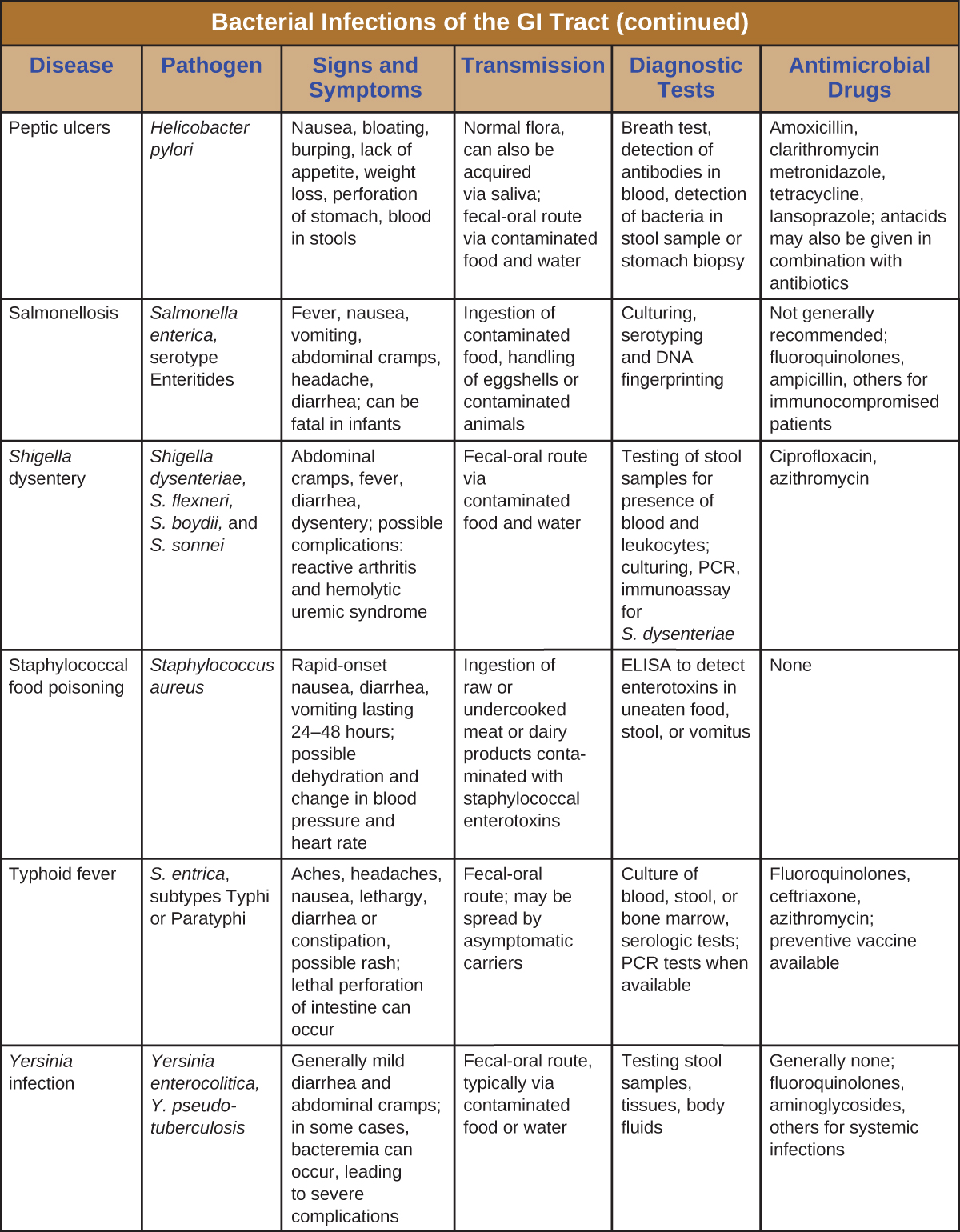| << Chapter < Page | Chapter >> Page > |
Diagnosis can be accomplished by isolating bacteria from stool samples or vomitus and uneaten infected food. Treatment involves rehydration and supportive therapy. Antibiotics are not typically needed, as the illness is usually relatively mild and is due to toxin activity.
The genus Yersinia is best known for Yersinia pestis , a gram-negative rod that causes the plague. However, Y. enterocolitica and Y. pseudotuberculosis can cause gastroenteritis . The infection is generally transmitted through the fecal-oral route, with ingestion of food or water that has been contaminated by feces. Intoxication can also result because of the activity of its endotoxin and exotoxins ( enterotoxin and cytotoxin necrotizing factor ). The illness is normally relatively mild and self-limiting. However, severe diarrhea and dysentery can develop in infants. In adults, the infection can spread and cause complications such as reactive arthritis, thyroid disorders, endocarditis, glomerulonephritis, eye inflammation, and/or erythema nodosum. Bacteremia may develop in rare cases.
Diagnosis is generally made by detecting the bacteria in stool samples. Samples may also be obtained from other tissues or body fluids. Treatment is usually supportive, including rehydration, without antibiotics. If bacteremia or other systemic disease is present, then antibiotics such as fluoroquinolones , aminoglycosides , doxycycline , and trimethoprim-sulfamethoxazole may be used. Recovery can take up to two weeks.
Bacterial infections of the gastrointestinal tract generally occur when bacteria or bacterial toxins are ingested in contaminated food or water. Toxins and other virulence factors can produce gastrointestinal inflammation and general symptoms such as diarrhea and vomiting. Bacterial GI infections can vary widely in terms of severity and treatment. Some can be treated with antibiotics, but in other cases antibiotics may be ineffective in combating toxins or even counterproductive if they compromise the GI microbiota. [link] and [link] the key features of common bacterial GI infections.


At the hospital, Carli’s doctor began to think about possible causes of her severe gastrointestinal distress. One possibility was food poisoning, but no one else in her family was sick. The doctor asked about what Carli had eaten the previous day; her mother mentioned that she’d had eggs for lunch, and that they may have been a little undercooked. The doctor took a sample of Carli’s stool and sent it for laboratory testing as part of her workup. She suspected that Carli could have a case of bacterial or viral gastroenteritis, but she needed to know the cause in order to prescribe an appropriate treatment.
In the laboratory, technicians microscopically identified gram-negative bacilli in Carli’s stool sample. They also established a pure culture of the bacteria and analyzed it for antigens. This testing showed that the causative agent was Salmonella .
Jump to the next Clinical Focus box. Go back to the previous Clinical Focus box.
Antibiotic associated pseudomembranous colitis is caused by _________.
Clostridium difficile

Notification Switch
Would you like to follow the 'Microbiology' conversation and receive update notifications?